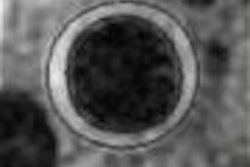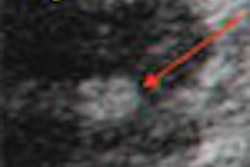Diagnostic Ultrasound by Carol M. Rumack, J. William Charboneau, and Stephanie R. Wilson, ed., 3rd ed.
Harcourt Health Sciences, St. Louis, 1998, $225
Conventional wisdom has drawn a bold line between the medical reference text and the more approachable, and less exhaustive, modality- and organ-specific general book. The reference text is rarely the one carried by the radiologist, while the thinner texts, which present information in concise and quickly readable formats, are usually the ones found at the work station or in the backpack.
The most recent edition of Diagnostic Ultrasound, despite its formidable weight and size, proves to be one of the few books that does both: provides the practitioner with an encyclopedic review of each topic in an easy-to-read format suited for all levels of practice.
This text serves as a solitary, near-complete reference. It also provides graded, accessible levels of information to the sonographer, resident and sonologist. The library in our ultrasound department is littered with a wide variety of reference material and it's a rare day when less than two of these books are employed in problem-solving. But having to consult more than one book is time consuming and can be frustrating.
In two volumes, Diagnostic Ultrasound covers all areas of sonography. Volume one opens with a solid review of ultrasound physics. The information provided is clearly presented and will certainly be appreciated by resident or technologist preparing for physics exams.
The following chapter covers abdominal sonography in great depth and detail. Normal anatomy is reviewed with superb illustrations and its sonographic correlates. The clinical presentations of pathology, with illustrated and photomicrographic representations of disease, are provided for comprehensive review of each topic. The manifestations of each disease are presented in generous number and exquisite quality through ultrasound images and where appropriate, other imaging modalities.
Subsequent chapters cover intraoperative, vascular, musculoskeletal, endocrine, obstetrics and gynecology, and pediatric ultrasound. Each is tailored to the needs of the person referencing the text. Information is offered in standard text format as well as in separate tables and charts. Highlighted bullet points make for fast reference.
The only draw back to this multivolume set is its heft. The books are heavy and the mere mortal can only carry one volume per trip. As is the case with all multivolume sets, there comes a time that the user will find the desired topic in the subject index, only to see that the pages referenced are in the other volume. However, this comes with the territory and is a small price to pay for the wealth of information.
By Dr. Daniel ReidmanAuntMinnie.com contributing writer
February 16, 2005
Dr. Reidman is the chief radiology resident at Madigan Army Medical Center in Tacoma, WA.
The opinions or assertions contained herein are the private views of the author and are not to be construed as official or as reflecting the views of the Department of Defense.
The opinions expressed in this review are those of the author, and do not necessarily reflect the views of AuntMinnie.com.
Copyright © 2005 AuntMinnie.com



















